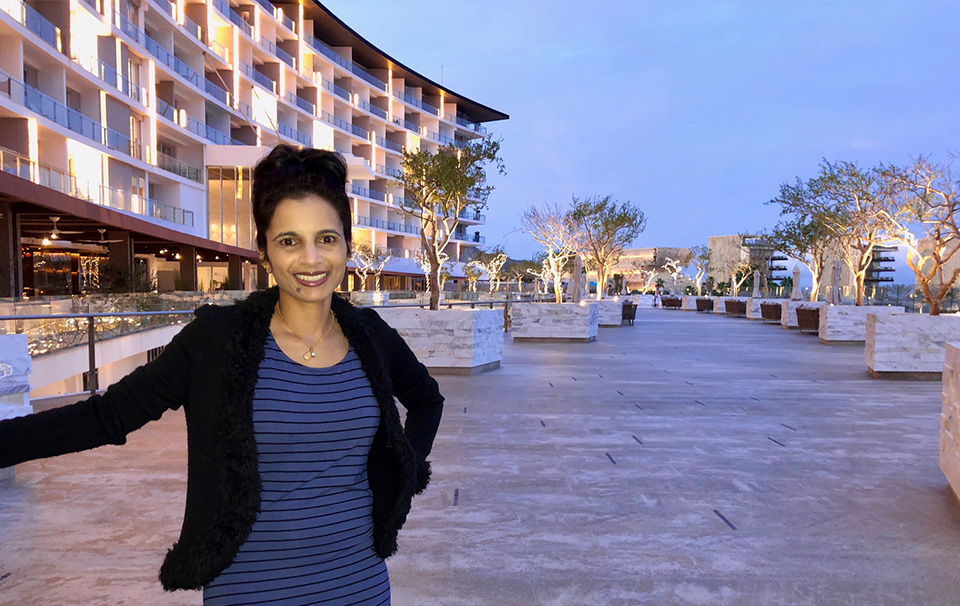“For DCIS patients we don’t want to treat and subject patients to the side effects of radiation if the risk benefit ratio is low. That is why I am really excited about DCISionRT. DCISionRT is a risk assessment tool that looks at the patient’s tumor biology to determine an individual patient’s benefit of radiation therapy following breast conserving surgery, as well as the patient’s risk of DCIS recurring or progressing to invasive cancer.”
With a keen interest in radiation and a passion to treat patients, Dr. Anushka Patel decided to pursue a career in radiation oncology. “Oncology was dear to my heart. When I was young, my uncle passed away from lymphoma. At that point, I knew that I wanted to make an impact for cancer patients.”
One of the cancers that Dr. Patel treats is ductal carcinoma in situ (DCIS), also known as stage zero breast cancer. “I tell my patients that DCIS is a pre-invasive cancer because it hasn’t progressed outside of the milk duct. For DCIS patients we don’t want to ‘over-treat’ and subject patients to the side effects of radiation if the risk benefit ratio is low. That is why I am really excited about DCISionRT. DCISionRT is a risk assessment tool that looks at the patient’s tumor biology to determine an individual patient’s benefit of radiation therapy following breast conserving surgery, as well as the patient’s risk of DCIS recurring or progressing to invasive cancer.”
“I have been ordering DCISionRT since the original studies which I participated in. I was interested from the beginning in the ability to tailor treatment to the individual patient. I really like the test. I think it’s innovative and patients are very interested in learning as much as possible about their options and risks. Some patients may have a higher or lower threshold of what they’re willing to accept. And so, I think DCISionRT gives us the opportunity to have a more informed discussion with our patients.”
“I have had a significant number of patients where it looks like there is a very small DCIS, everything looks good pathologically, and then the Decision Score comes back as elevated risk. In other cases, DCISionRT aligns with the pathological characteristics and gives us the reassurance that the biology’s okay and therefore, we can confidently proceed without radiation. The more information we can give the patient the better.”
“And that philosophy is shared wholeheartedly by the breast surgeons that I work with. They support my decision to order the test on the majority of my DCIS patients. For them, DCISionRT can play a role in surgical planning, especially for the younger patients. If DCISionRT comes back as very high risk, some patients may decide to move straight to a mastectomy. We tend to try to get those patients a DCISionRT test pre-surgery to help with that decision making. We want to make sure that they have all the information before they decide to have a mastectomy.”
Although Dr. Patel is very busy with trials and patients, she carves out time with her husband and family. “We like watching movies and salsa dancing! And I know it doesn’t sound fun, but I really like to exercise. It gets the adrenaline and dopamine going.”






